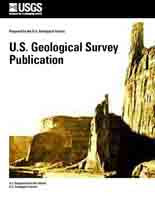Geologic maps and cross sections of mine levels at the Pea Ridge iron mine, Washington County, Missouri
Links
- More Information:
- Download citation as: RIS | Dublin Core
Abstract
This geologic mapping and interpretation of the Pea Ridge iron mine, Missouri, is part of a cooperative effort between the U.S. Geological Survey (USGS) and the Missouri Department of Natural Resources, Division of Geology and Land Survey (DGLS), under the auspices of the USGS Midcontinent Strategic and Critical Minerals Project. The goal of the Pea Ridge study is to compare the Middle Proterozoic iron deposits of Missouri with the Middle Proterozoic Olympic Dam deposit and similar deposits of the Stuart Shelf, South Australia. This effort developed from work by Sims and others (1987), who recognized the many similarities between the St. Francois terrane in southeastern Missouri and the Stuart Shelf and also the potential for Olympic Dam-type deposits in the Middle Proterozoic granite-rhyolite terranes of the Midcontinent. Detailed descriptions of the map units are given in Nuelle and others (1992). Results of stable-isotope, fluid-inclusion, and traceelement studies that focus on the origin of the ore deposit are presented in Day and others (1991, 1992, and 1993), Sidder and others (1991, 1993a, b), and Cordell and others (1993).
Study Area
| Publication type | Report |
|---|---|
| Publication Subtype | USGS Numbered Series |
| Title | Geologic maps and cross sections of mine levels at the Pea Ridge iron mine, Washington County, Missouri |
| Series title | Miscellaneous Field Studies Map |
| Series number | 2353 |
| DOI | 10.3133/mf2353 |
| Year Published | 2001 |
| Language | English |
| Description | 5 sheets |
| Country | United States |
| State | Missouri |
| Scale | 24000 |


